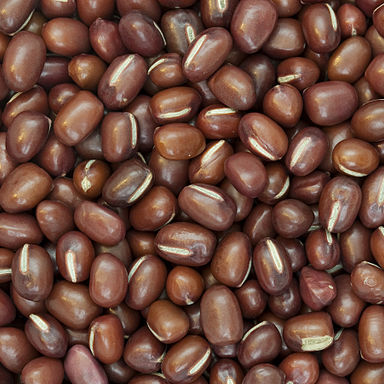Annual herbs, erect or twining, 30-90 cm tall. Stems angular, sparsely pilose. Stipules peltate, lanceolate, ca. 8 mm, point of attachment elongated; leaflets ovate or rhomboid-ovate, 5-10 × 5-8 cm, sparsely pilose on both surfaces, apex broadly triangular or subrounded, lateral leaflets oblique, entire or shallowly 3-lobed. Racemes axillary, 5-or 6-flowered, pedunculate. Calyx campanulate, 3-4 mm. Corolla yellow, ca. 15 mm; standard oblate or subreniform, apex emarginate; wings broader than keel, shortly clawed and auriculate; keel apex incurved for nearly a half circle, base clawed. Ovary linear; style curved. Legumes terete, 5-8 × 0.5-0.6 cm, glabrous or almost so. Seeds dull red or with various other colors, oblong, 5-6 × 4-5 mm, truncate or subrounded at both ends; hilum not impressed. Fl. Jun-Jul, fr. Sep-Oct.
More
An erect bushy bean plant. They are plants which re-grow from seed each year. Plants grow up to 60 cm tall. The flowers occur as clusters of bright yellow flowers. The fruit are pods 6-12 cm long. These contain up to 12 small oblong seeds. These can vary between red, brown and black. They are 0.5 cm long. There are several named cultivated varieties.
The young pods are eaten cooked. The seeds can be eaten cooked. They are added to soups, stews and salads. They are boiled, mashed and sweetened. The seeds are germinated for sprouts. They can be popped liked corn or used as a coffee substitute.


